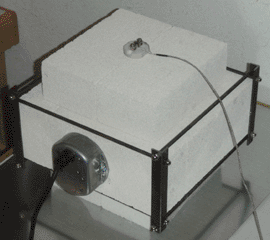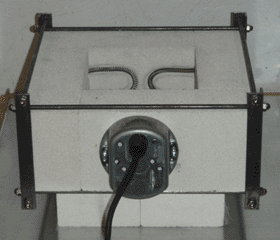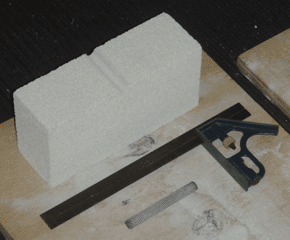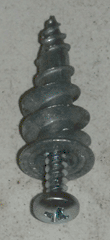



Having completed my work on flexible insulation, I decided to continue exploring the topic of insulators by experimenting with ceramics. Naturally, having a kiln is a prerequisite for such experiments, so I decided to build one as simply as possible. The kiln at the top of the page is constructed out of eight 9x4.5x3" firebricks, which are rated for temperatures up to 2300°F (1260°C). Two are unmodified and form the base of the kiln; the next four are compressed into a ring using angle iron and threaded shafts, and are grooved to hold an 1800W heating element. The last two form a lid, and are grooved in the center to allow a type-K thermocouple to reach into the kiln. The grooving was accomplished by hand, using a section of threaded rod as a coarse file, and all of the external wiring (including a junction box used as an enclosure) is bolted to the firebrick itself using metal drywall anchors.
In use, the rate of heating is controlled externally using my 20-amp variac, and the temperature is monitored manually with a digital thermocouple meter. The kiln can easily reach over 1000°C, and if the variac is slowly adjusted upward at regular intervals, a relatively steady rate of heating can be achieved. The surface of the kiln does become warm during operation, but generally not to a dangerous degree; an exception is the junction box, which likely needs additional ventilation, although a fan was able to keep it cool during testing.
Although this kiln is small, it suits the scale of the projects I intend to use it for. Furthermore, if in the future I decide to build a larger outdoor kiln, this will remain useful as a test kiln for prototyping. Having verified that the bricks and heating element can handle the temperatures required of them, I will now begin using this kiln to experiment with ceramics.